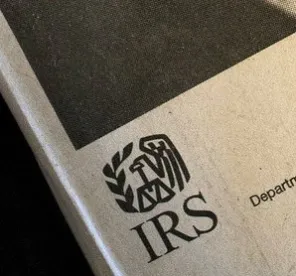On May 4, 2020, the Internal Revenue Service (IRS) issued informal guidance regarding the coronavirus-related distributions (CRD) and loan options provided for retirement plans and participants under Section 2202 of the Coronavirus Aid, Relief, and Economic Security (CARES) Act. For qualified individuals, the CARES Act permits CRDs up to an aggregate limit of $100,000, allows for an increased limit on plan loans up to $100,000, and allows for a delay in plan loan repayments. In a series of 14 questions and answers (Q&As), the IRS addressed questions about eligibility, implementation, and taxation and reporting issues, and provided insight on future guidance.
The Q&As provide an important affirmation for employers currently considering the CRD and loan options made available under the CARES Act, stating that the adoption of these CRD and loan rules is optional and that employers can choose whether, and to what extent, to amend their plans to provide for CRDs and/or loans. Note, however, that plan sponsors may want to work closely with their record keepers and administrators to ensure that the choices made can be successfully implemented.
The Q&As anticipate the release of additional guidance in the near future. In formulating this guidance, the Treasury Department and IRS will apply the same principles implemented to provide relief to victims of Hurricane Katrina in 2005, as enumerated in Notice 2005-92.
Qualified Individuals
The Q&As confirm that an individual is a “qualified individual” eligible to take a CRD or loan under the CARES Act if the individual or his/her spouse or dependent has been diagnosed with COVID-19 by a test approved by the U.S. Centers for Disease Control and Prevention or has experienced adverse financial consequences as a result of:
-
being quarantined, furloughed, or laid off, or having work hours reduced, due to COVID-19;
-
being unable to work due to lack of child care caused by COVID-19; or
-
closing or reducing the hours of a business owned or operated by the individual due to COVID-19.
In addition, the Q&As state that this list of factors may be expanded in future IRS guidance in response to comments received. Of note, neither the CARES Act nor the Q&As include a reduction in salary (as opposed to a reduction in hours) within the “qualified individual” definition.
The Q&As also confirm that a plan administrator may rely on an individual’s certification that he or she is a qualified individual, unless the administrator has actual knowledge to the contrary. The individual, however, is entitled to treat a distribution as a CRD on his or her individual federal income tax return only if he or she is actually qualified. The Q&As indicate that qualified individuals may designate any eligible distributions as a CRD as long as the total amount designated is not more than $100,000, using Form 8915-E, which will be available before the end of 2020. (The Form 8915 series is used to report disaster-related distributions.)
Coronavirus-Related Distributions
The CARES Act permits a 401(k) plan, 403(b) plan, or governmental 457(b) plan to make a coronavirus-related distribution (CRD) to a qualified individual from January 1, 2020 to December 30, 2020. The Q&As confirm that eligible plans may permit CRDs to qualified individuals before a distributable event (such as reaching age 59½) has occurred. However, the Q&As confirm that the CARES Act provisions do not otherwise change the limits on distributions. For example, a pension plan or money purchase plan cannot make a distribution earlier than otherwise permitted. In addition, the spousal consent requirements continue to apply for distributions from pension plans. The Q&As state that any qualified retirement plan distribution made to a qualified individual in 2020 can qualify as a CRD, with the tax and repayment treatment discussed below, even if the plan from which the distribution is made has not chosen to adopt CRD provisions.
A qualified individual can receive CRDs up to an aggregate limit of $100,000 from all eligible retirement plans or individual retirement accounts (IRAs). A CRD is not subject to the 10 percent additional tax on early distributions. In addition, a CRD can be included in income entirely in the year of distribution or ratably over a three-year period, starting with the year in which a distribution is received. CRD recipients may repay all or part of the CRD to an eligible retirement plan within three years after the date the distribution was received. According to the guidance, plans must report CRDs on Form 1099-R in the year of distribution, even if the individual repays the CRD in the same year. The IRS anticipates providing additional information on how to report these distributions later this year.
The Q&As note that plans are not required to change their terms to accept CRD repayments; however, the IRS anticipates that plans will accept CRD repayments as rollover payments, implying that plans that accept rollover contributions must also accept CRD repayments. The Q&As also provide that if a qualified individual chooses to repay the CRD after it has been included in income, he or she can receive a refund for taxes paid in prior years.
Loan Provisions
The CARES Act permits plans to increase the limits for plan loans made to qualified individuals from March 27, 2020, through September 22, 2020 (180 days following enactment), to the lessor of (1) $100,000 (minus outstanding plan loans of the individual), or (2) the individual’s vested benefit under the plan. In addition, the due date for any loan repayments due between March 27, 2020, and December 31, 2020, may be delayed under the plan for up to one year. Note, however, that delayed repayments may be required to begin in January 2021, assuming the IRS applies principles consistent with those used following Hurricane Katrina—even though this is earlier than one year from the start of the repayment delay. This inconsistency should be addressed in future guidance. Delayed repayments “will be adjusted to reflect . . . any interest accru[ed] during the delay.”
These distribution and loan provisions within the CARES Act have certainly raised many questions among employers, plan administrators, and participants. These Q&As provide some needed clarity for the plethora of administrative quandaries, but there are still many unanswered questions that hopefully will be addressed in subsequent guidance.






 />i
/>i

